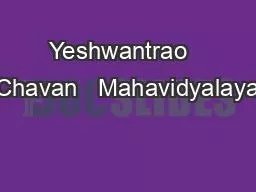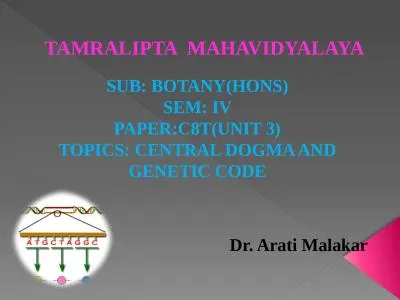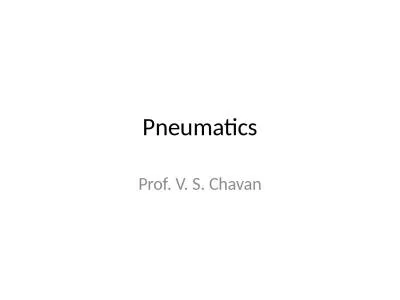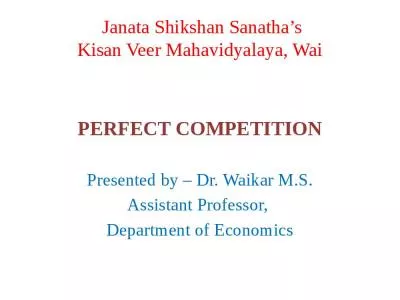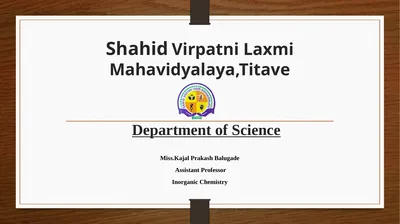PPT-Yeshwantrao Chavan Mahavidyalaya
Author : rivernescafe | Published Date : 2020-09-29
Tuljapur DistOsmanabad413 601 MH INDIA Dr S L Bhalkare Head and Assistant prof Department of Fishery Science BSc Second Year Semester IV Paper Fish Culture
Presentation Embed Code
Download Presentation
Download Presentation The PPT/PDF document "Yeshwantrao Chavan Mahavidyalaya" is the property of its rightful owner. Permission is granted to download and print the materials on this website for personal, non-commercial use only, and to display it on your personal computer provided you do not modify the materials and that you retain all copyright notices contained in the materials. By downloading content from our website, you accept the terms of this agreement.
Yeshwantrao Chavan Mahavidyalaya: Transcript
Download Rules Of Document
"Yeshwantrao Chavan Mahavidyalaya"The content belongs to its owner. You may download and print it for personal use, without modification, and keep all copyright notices. By downloading, you agree to these terms.
Related Documents

